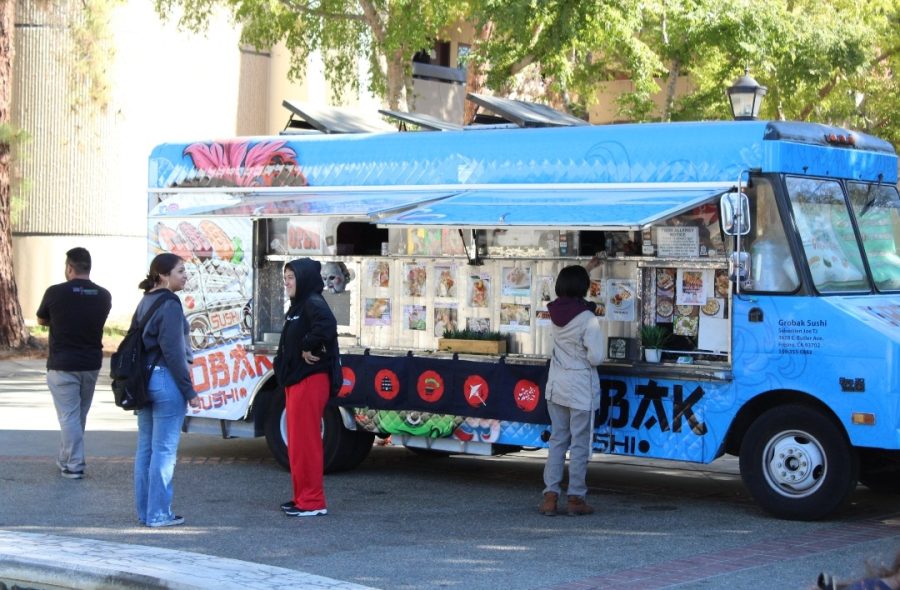When Steve Jobs first introduced the iPod to the world, people were reluctant at first to give up their stacks of CDs. Very quickly, however, the iPod became a phenomenon for digital music. All over the Fresno City College campus, students can be seen walking around with their iPod’s in hand. Well, step aside iPod. The newest of gadgets in the digital world is the Kindle 2 – Amazon.com’s new e-reader – basically – the iPod for books.
“I love my iPod, I carry it everywhere, this [Kindle] would be great … maybe it would get me to read more,” said Jim Lynch, a student at FCC. According to Amazon.com, the Kindle has many features including a paper-like screen called e-ink and a fast 3G network, enabling wireless downloads of books, newspapers, magazines, and blogs from Amazon’s wireless store. The Kindle can hold over 1,500 books which are saved on Amazon’s server. Users can add annotations to text, just like those who write in the margins of a book and since it is digital, there is the ability to edit, delete, and export notes. Additionally readers no longer need to worry about being caught without a dictionary because the Kindle includes The New Oxford American Dictionary with over 250,000 entries and definitions, so the reader can look up the definitions of words while reading.
Kindle also has the ability to highlight and clip key passages as well as bookmark pages for future use by using the five-way controller. Bookmarks are no longer necessary because Kindle remembers and always opens to the last page read.
Okay, now I know you are saying is all this too good to be true? The answer is no if you are willing to pay the Kindle 2’s hefty price of $359 – plus the cost of books. The good news is the books are definitely cheaper. New releases can be found for $9.99 versus the average $24.99 consumers pay for hardback books.
The Kindle’s target consumers are heavy readers who want an easy way to carry several books around with them, but these “heavy” readers are also the Kindle worst critics. “I don’t know that I would like it … I like the way books smell and the way they feel when I read,” Salina Baeza, an FCC student, said. Another FCC student, Jeffrey Miles, said, “The Kindle is too expensive and then to have to pay for books too?”
The world is moving into an era where there will be many more choices that will increasingly be based on personal taste. People have very personal choices about what sort of connected computer they want to use for communicating, working, reading, and so on. For some, the Kindle may be the ideal shape for reading books.
The implications of the Kindle on the future of the book are great. Kindle loses the physical form, forces all books into a common size and shape, and homogenizes the typeface. Clearly something is lost compared with a printed book. Yet what is gained is undeniable and as impending as the weather. The ability to carry whole libraries (like the iPod did for music) and the ability to get the daily paper, magazine, or a new book automatically – practically instantly and at a savings – is literally a dream come true.
College students will be excited to know that Amazon is selling Kindle versions of textbooks. The notion of never having to carry around heavy textbooks and to save on the final tab excites students. “I couldn’t imagine not having to carry around these books … My Biology book alone is at least two and a half inches thick, probably 25 pounds!” Jesse Boswell, an FCC student said .
The evolution toward e-reading devices as the dominant means of reading books will be a drawn-out and complicated affair. It will require screen technology with high-resolution color, multi-touch, flexible displays and most of all – the ability to share a book with a friend; the notion of a lending library where a Kindle user can lend another Kindle user a book.
These are all features that the Kindle, as well as competitors like the Sony eReader, is still waiting for. A mass-market solution will also involve pricing that acknowledges how much cheaper it is to distribute books digitally. But for now, the Kindle 2 is the closest thing to this magic formula of the future book.



